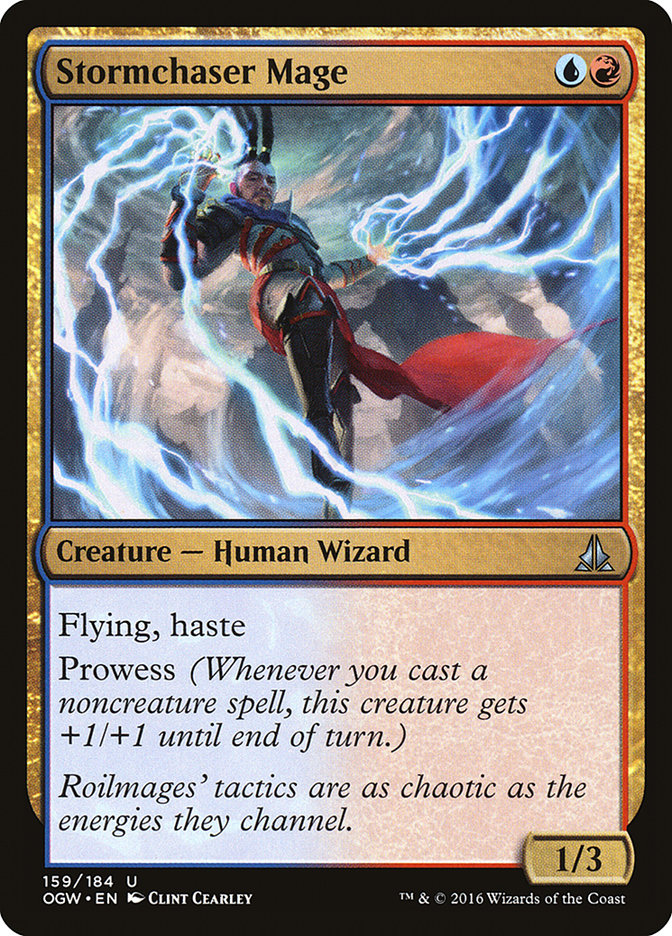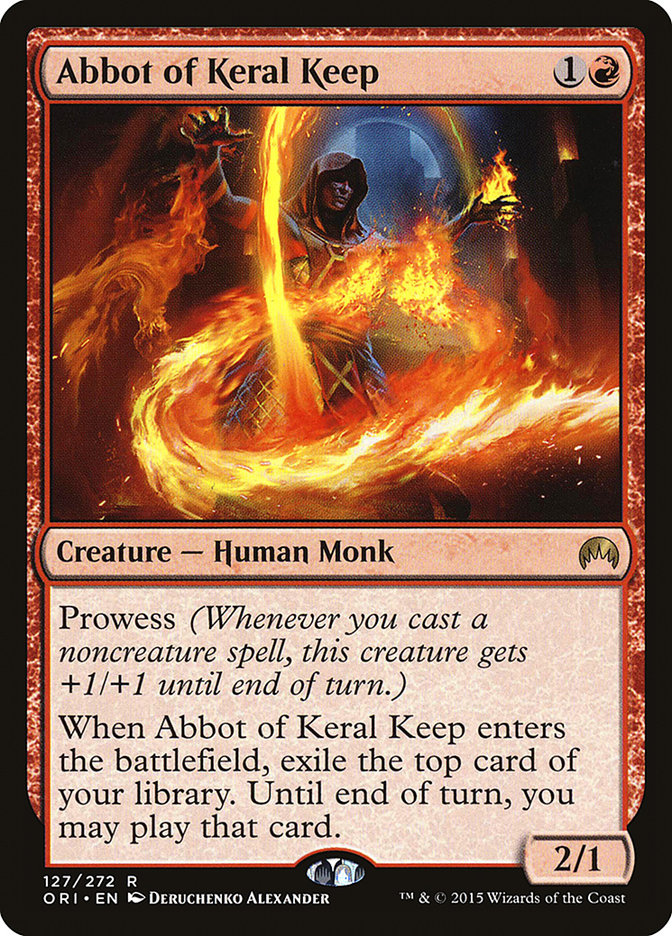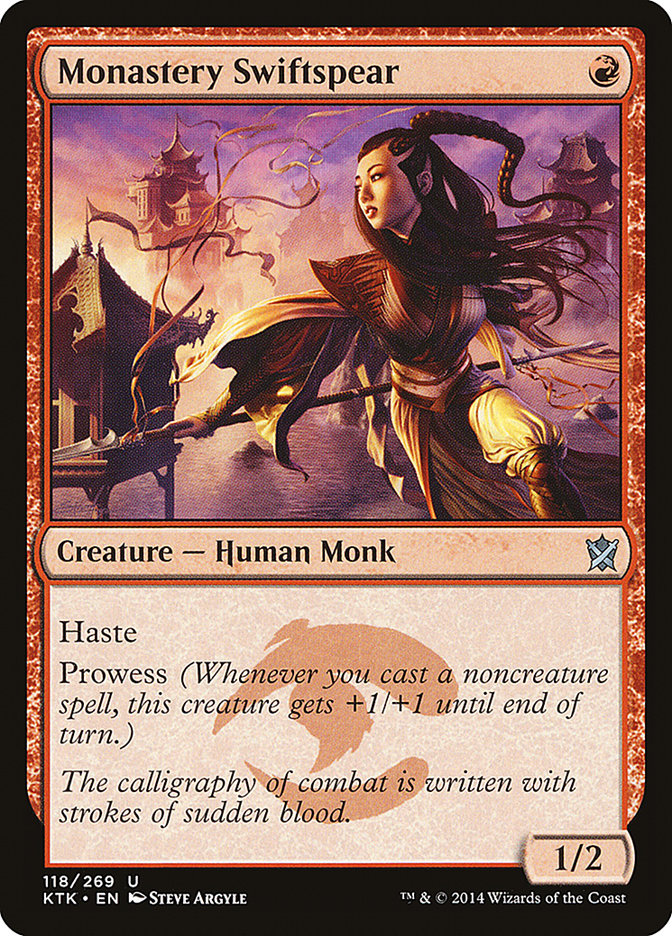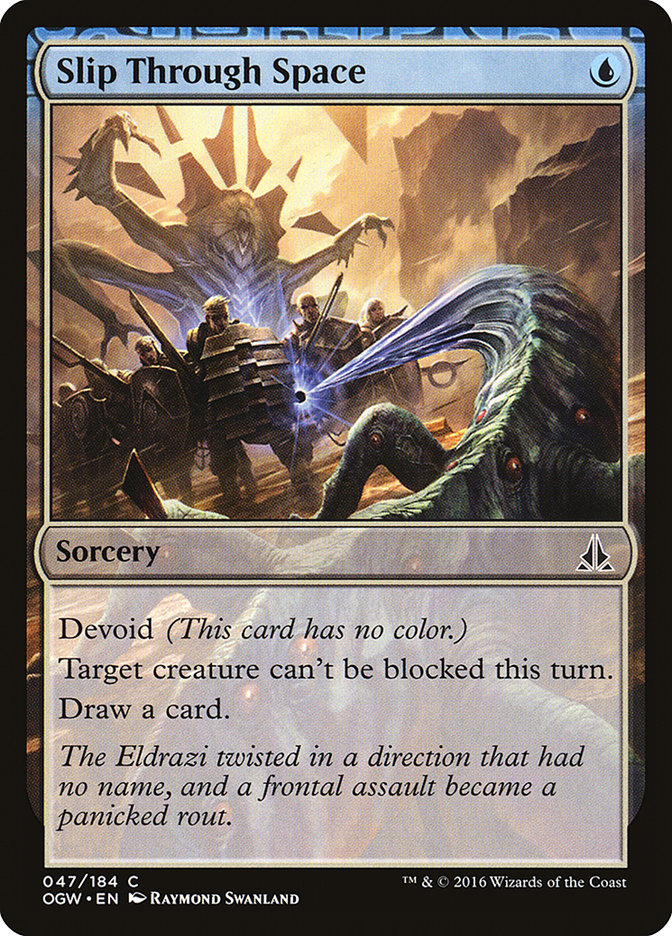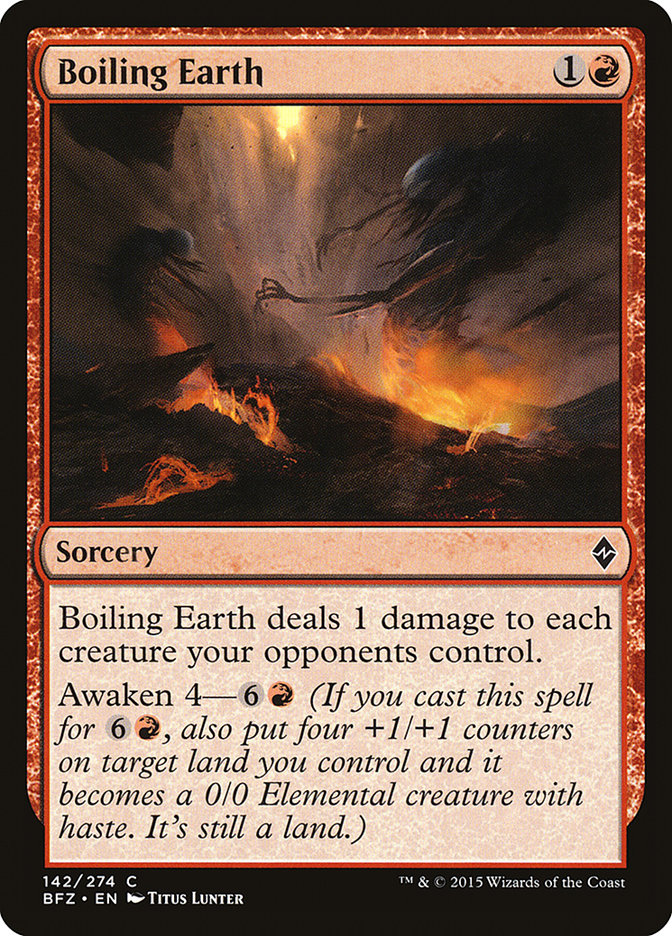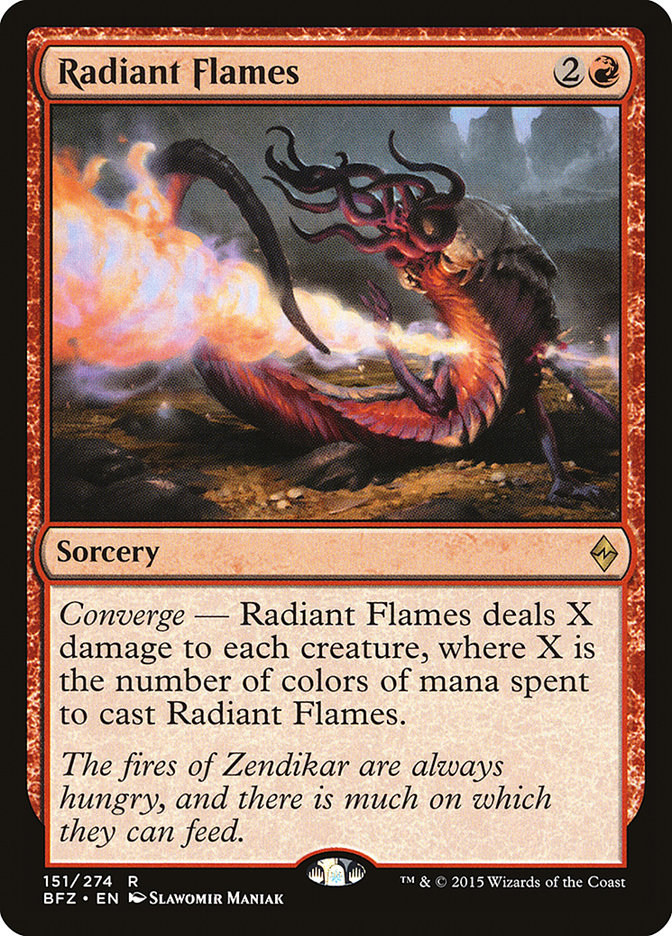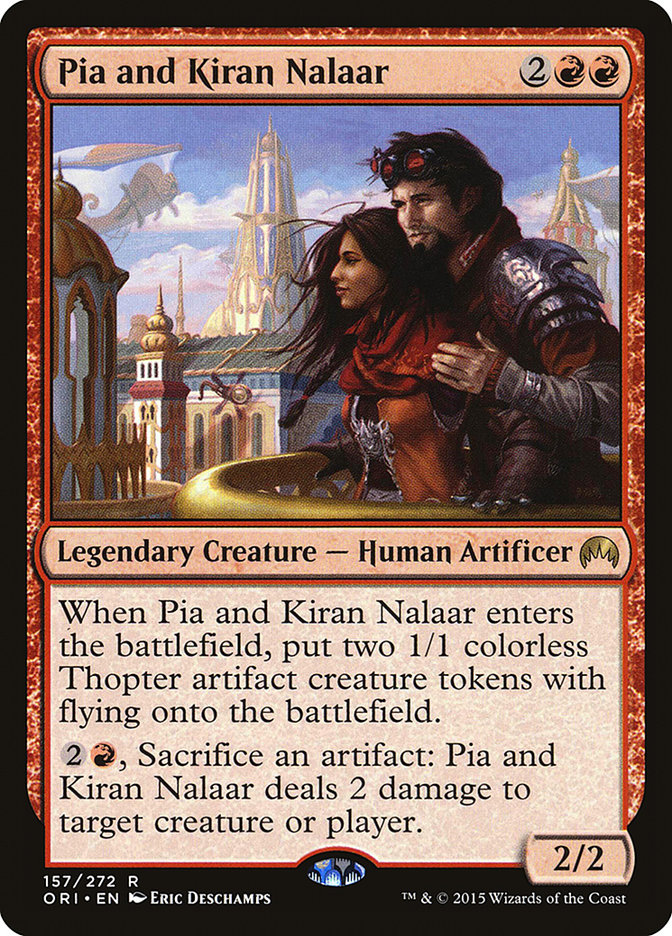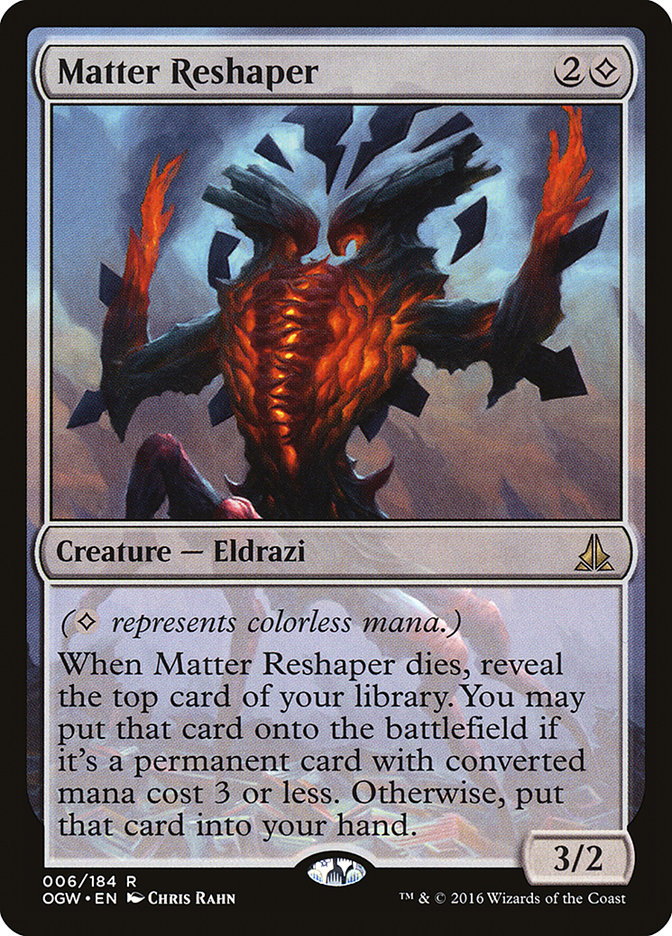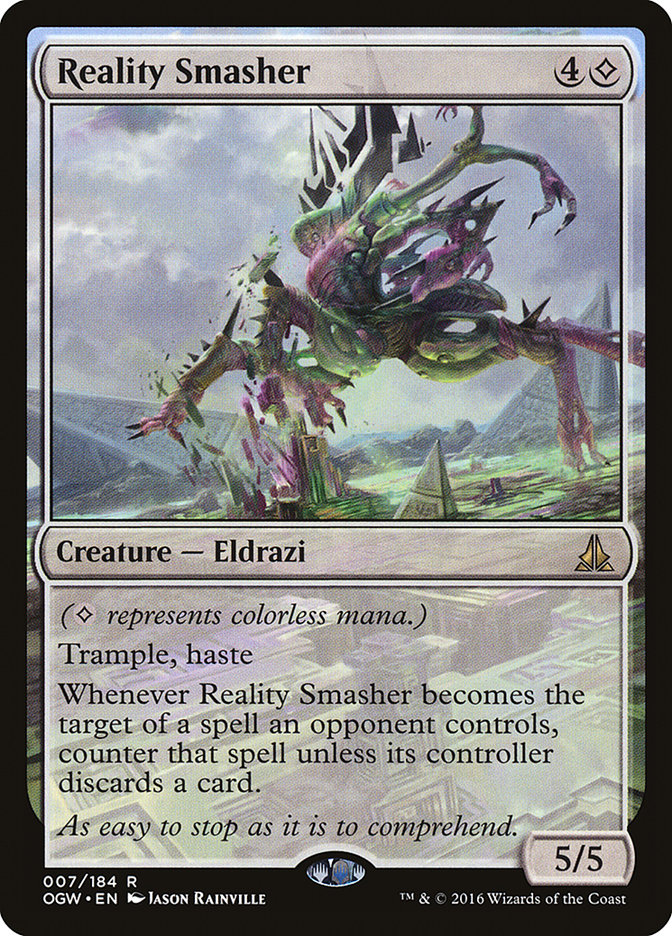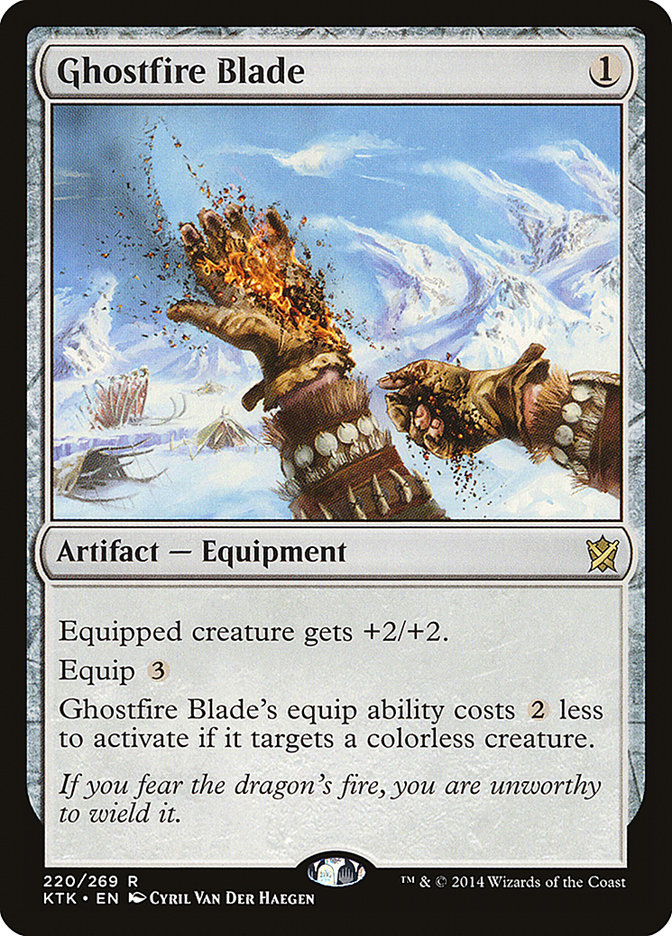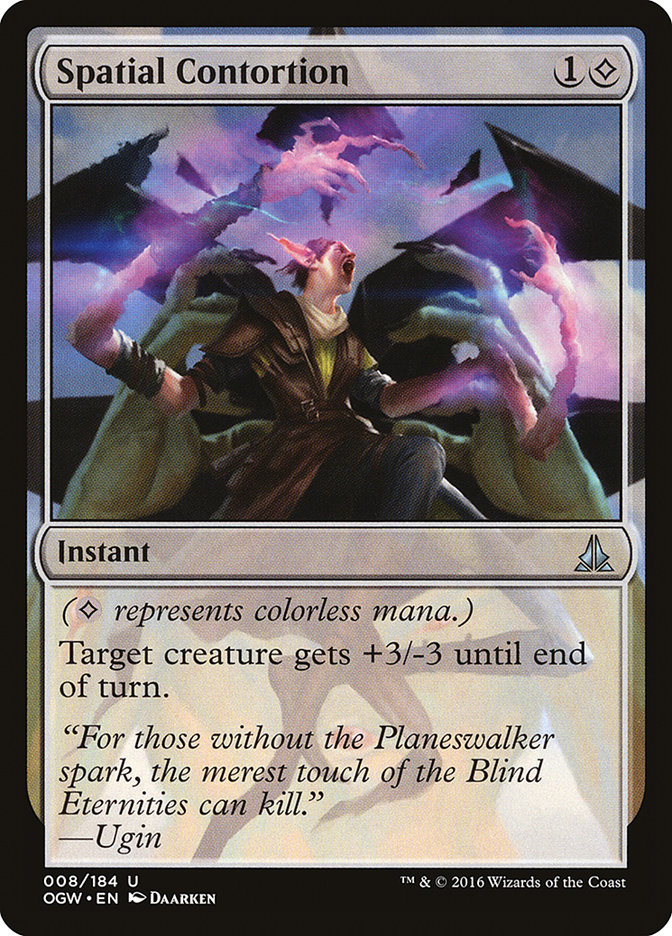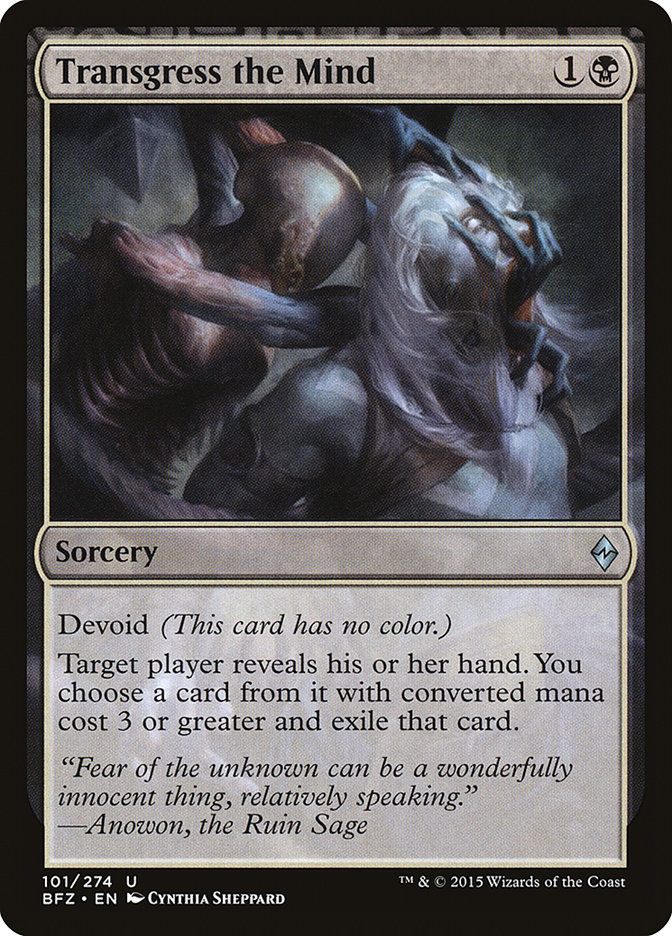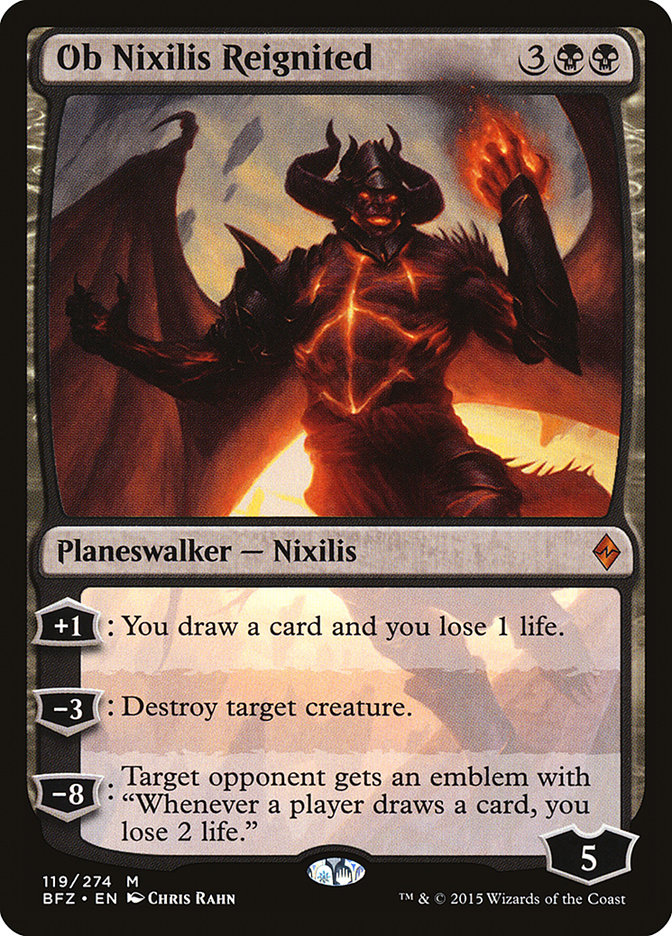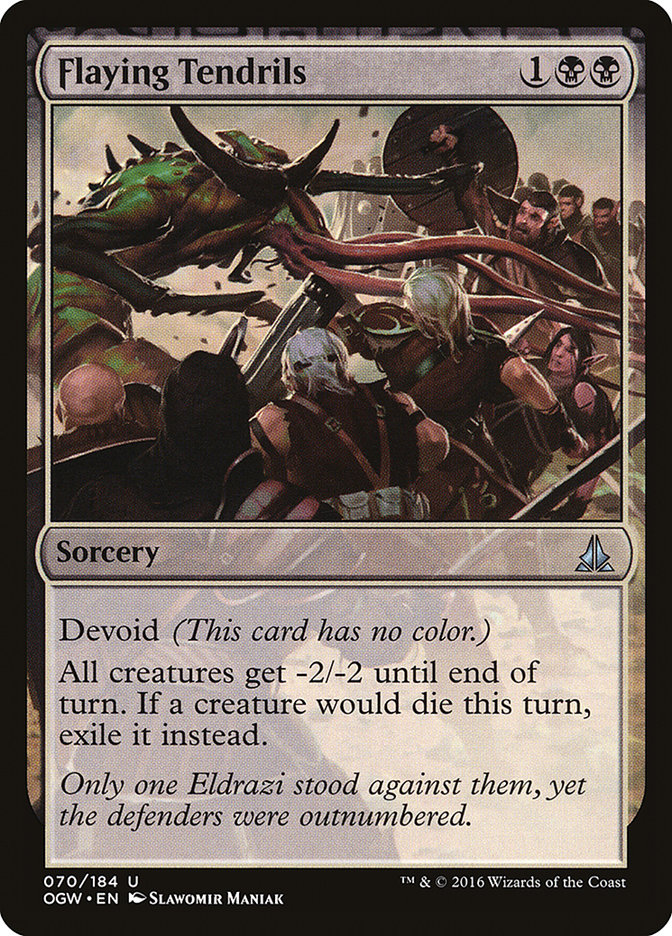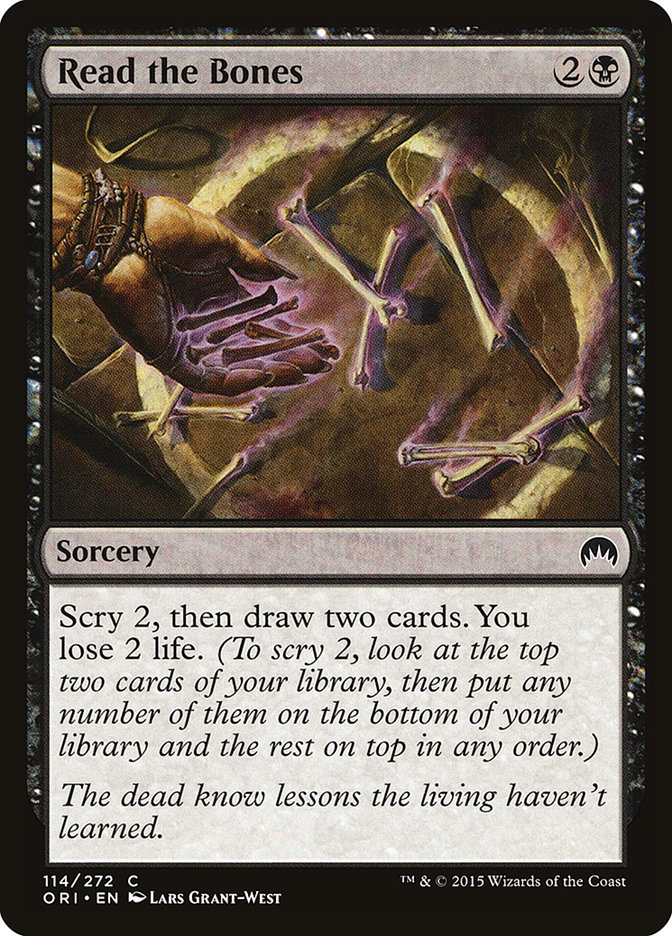Historically, the second set of a block has done little to change Standard, merely offering some upgrades to existing decks that can shift the metagame a little and maybe open up space for something new. At best there is a card or two (think Courser of Kruphix) that is strong enough to carve a piece of the metagame for itself, but even that rarely makes a revolutionary change to the status quo.
But with the switch to two-set blocks, we have reason to believe that these much-maligned second sets will be more densely packed with powerful, metagame-impacting cards. Interestingly, Oath of the Gatewatch appears to have many cards that have few if any historical comparisons, making them tricky to evaluate. As such, it is my belief that Oath will initially underperform as players bring untuned lists or simply put their efforts into cards that do not pan out. But at some point the hive mind will find the gems and they will reshape Standard more than we have seen a second set do in a very long time.
That may make our task of sifting through the spoiler and building new decks seem more daunting, which it is, but has that ever stopped any Magic player from brewing? We know who we are and it is futile to resist. On to the brews!
One of the cards that has caught my eye is Stormchaser Mage. Between it, Abbot of Keral Keep, and Monastery Swiftspear, Standard has a nice collection of cheap prowess creatures that could form the base of an aggressive deck. Tempo decks like this have struggled lately in Standard because the smallest format tends to be the one most flush with creature removal, thus preying on the natural tendency for tempo decks to skimp on threats in order to play enough interactive spells to execute their game plan.
But the power of Jace, Vryn’s Prodigy and Treasure Cruise give this version of the deck more resilience to removal-heavy midrange decks, and I think there are enough cheap spells to make it work:
Creatures (16)
Lands (21)
Spells (23)
- 2 Dispel
- 4 Titan's Strength
- 3 Treasure Cruise
- 2 Temur Battle Rage
- 2 Roast
- 3 Fiery Impulse
- 2 Magmatic Insight
- 1 Expedite
- 4 Slip Through Space
Sideboard

In addition to Jace and Cruise, the printing of the U/R Creature Land, Wandering Fumarole, gives the deck much-needed threat density which will further insulate it from piles of removal spells. This deck also features an Atarka Red-esque combo element with the inclusion of Titan’s Strength and Temur Battle Rage. In combination with Slip Through Space, there is the potential for huge damage output on turns 3 and 4 if your opponent taps out to develop their board. Otherwise, you can sit back on some removal spells, get in damage while you can, and refuel to set up a big turn later, perhaps with the protection of Dispel.
Dispel is an interesting card in this deck because on the surface, as a one-mana card that can defend a key threat and trigger prowess while doing so, it seems like an easy inclusion at three or four copies. But counterspells can play awkwardly in this deck, since you cannot use them proactively to trigger prowess and your opponent can pick the fight on their own turn to prevent you from converting the prowess triggers into damage. However, if you catch your opponent unprepared for the matchup, which is likely to happen early in the post-Oath format, Dispel can be one of the best cards in the deck.
The last maindeck card I want to go over in some detail is Slip Through Space. Obviously a deck built around Prowess is in the market for as many cheap cantrips as possible. But this one plays a particularly important role. Not only does it facilitate the combo turns this deck is capable of, it also serves as a pseudo-removal spell. With only three copies of Fiery Impulse and two of Roast, your opponents will often be able to generate some blockers for your creatures. But if you use your removal early to clear space for the first few attacks, Slip Through Space will let you get through any army of creatures to deal the last points.
In general, as the number of attack steps you need to kill your opponent decreases, the more pseudo-removal approaches actual removal in effectiveness. This deck can certainly kill with few attack steps, so Slip Through Space is the perfect role player.
The sideboard has a normal collection of counterspells and removal needed to appropriately tweak the deck for different matchups, and my general philosophy was to include the cheapest card possible for each role. That is why you see a single Boiling Earth over Radiant Flames. Between Fiery Impulse and Wild Slash you have enough cheap removal to deal with the creatures of Atarka Red, but you will need help in dealing with Dragon Fodder and Hordeling Outburst and Boiling Earth does that as cheaply as possible.
The only expensive card included in the sideboard is Pia and Kiran Nalaar, which is the last addition to increase threat density against removal-heavy decks. Having a single threat spread across three bodies is excellent against the one-for-one removal spells players are likely to favor against a deck like this, making Pia and Kiran Nalaar the best option for a big, midgame threat.
All About Eldrazi
Everyone suspected that the Eldrazi would take over Standard at some point with how prevalent they are in Battle for Zendikar block. Personally, I suspected the Ingest/Processor engine to be at the heart of these decks, but with no support for that mechanic in Oath of the Gatewatch, we are left to look at the more aggressive, heavy hitting-colorless creatures coupled with Ghostfire Blade. (An awful fate, I know.)
Of these cards there are two that stand out from the new set to me: Matter Reshaper and Reality Smasher.
Matter Reshaper is a nice resilient package, giving you a reasonably-sized body for three mana that your opponent rarely wants to kill, especially in the early game where an extra land can ramp you into a devastating turn. This card is not particularly flashy but it is just good and I cannot see a viable Eldrazi-centric aggro deck not playing it.
Reality Smasher is a card I am higher on than most. It is vulnerable to Crackling Doom, yes, but as a haste creature you can typically find a spot to get in at least one attack, at which point that exchange of resources is favorable. Without Crackling Doom, your opponent is simply in a horrible position against this card, where you are simultaneously pressuring both their life total and resource count. This is also the exact kind of card I want in my aggressive decks to punish my opponent for spending time dealing with my early threats.
With it established that there is enough payoff to want to build around Eldrazi, the most difficult question is what colors to play and how the mana base should be constructed. Needing access to solely colorless mana will make playing a fetchland-Battle land manabase difficult, so we will already need to limit ourselves to one or two colors. If we want to play two colors, then an enemy pair is more attractive because we gain access to a painland that effectively functions as a tri-land since it also provides colorless mana. However, the B/R combination offers some tempting cards like Dust Stalker and Forerunner of Slaughter.
Whatever our choice of colors, Corrupted Crossroads will be very important if we have more than one, since it is effectively a painland for any combination. I am also interested in Ruins of Oran-Rief as a utility land that can provide significant value if the game goes long.
With these ideas in mind, here are my first drafts of Eldrazi-centric aggro lists:
Creatures (27)
- 3 Forerunner of Slaughter
- 2 Dust Stalker
- 2 Eldrazi Mimic
- 4 Flayer Drone
- 1 Eldrazi Obligator
- 3 Reality Smasher
- 4 Bearer of Silence
- 4 Reaver Drone
- 4 Matter Reshaper
Lands (24)
Spells (9)
Sideboard

This list is built to be more aggressive than most Eldrazi Aggro lists, and as such eschews the powerful Thought-Knot Seer in favor of Dust Stalker. The high number of powerful haste creatures makes Eldazi Mimic better as a means to set up some explosive turns, and the versatility of Bearer of Silence and Blighted Fen allows us to trim removal spells to increase threat density, which is important when trying to take advantage of Ghostfire Blade.
The removal we do have is very high-impact as Spatial Contortion kills most of the small creatures in the format, notably Jace, Vryn’s Prodigy; Soulfire Grand Master; Monastery Swiftspear; and Warden of the First Tree. In combination with Ghostfire Blade, it can also turn into a pump spell on any of our creatures, an important mode in an aggressive deck so as not to get stuck with too many reactive cards in hand. Murderous Cut is obviously great, and even though this deck does not support Delve as well as most, it should be suitable for the two copies we have.
A word on Ghostfire Blade: I think it plays better in this list than most, given our lower curve and more aggressive tilt. Simply playing it on turn 2 to equip to Reaver Drone puts a significant clock on your opponent, and it plays very well with Bearer of Silence and Reality Smasher due to those creatures having flying and trample, respectively. It allows you to create boards that are less vulnerable to small sweepers like Kozilek’s Return and Flaying Tendrils despite most of your creatures having fairly small toughness.
The sideboard is certainly lackluster, which is to be expected when you cut down on colored mana, but we have some solid options. Hangarback Walker gives you a great resilient threat against removal-heavy decks, especially in combination with Ghostfire Blade and Flayer Drone. It may seem strange to not play the powerful construct main but I do not think it is aggressive enough for this build.
Transgress the Mind is a great discard option against ramp and control that is easier on our mana than Duress. Given more space, I could see having Thought-Knot Seer in addition as a post-sideboard discard package when we want to be less aggressive. For now I only have a single Ob Nixilis Reignited to give the deck another great top deck in the midgame.
The last six slots are devoted to red aggro, where this deck will likely struggle. Unfortunately, the nature of our deck prohibits us from playing sweepers, but Wild Slash and Arc Lightning should serve as solid removal spells in the match-up that can switch to burn spells in the inevitable race.
The other list I like is mono-black, making for easier mana. It plays a slower, more midrange game plan.
Creatures (18)
Planeswalkers (3)
Lands (25)
Spells (14)

Many of the aggressive elements of the B/R list have been cut in favor of more resilient threats and disruption, making for an interesting aggressive-midrange deck. The full discard package of Transgress the Mind and Thought-Knot Seer is in the main, accompanied by four copies of Duress in the sideboard. This should help us disrupt the ramp decks and cut the control decks off of their great card advantage spells such as Painful Truths and Treasure Cruise, at which point they will fall victim to the many two-for one-threats in the deck. In fact, all eighteen of the deck’s creatures provide some sort of value when they enter the battlefield or when they die.
In place of Reality Smasher, this deck uses Ob Nixilis Reignited as its top-end threat because it can provide some extra card advantage in a threat-light draw where we spend the early turns answering our opponent’s threats.
The mana base continues the trend of sacrificing aggression for value, where I opt for more copies of Blighted Fen, Mirrorpool, and Sea Gate Wreckage over something like Ruins of Oran-Rief. Unfortunately, to increase my density of sources for colorless and black mana, I have included off-color painlands. They are superior to Corrupted Crossroads here since they tap for black mana that can be used to cast non-devoid cards, most notably Ob Nixilis Reignited and Ruinous Path.
Seventeen black sources may be light here, especially if you are forced to play Crumbling Vestige to cast an early colorless card, but I would rather cast my colorless cards on curve so I am trying to find the minimum number of black sources to reliably cast all the deck’s spells.
As with the BR list, this deck has a lackluster sideboard, albeit with a great upgrade into Flaying Tendrils against aggressive decks. Read the Bones provides some added card advantage in slower matchups and Kalitas is a tough-to-cast but incredibly powerful tool against Rally the Ancestors decks. It is certainly possible I should have some in the B/R sideboard as well, but that deck applies enough pressure that it may not need dedicated hate.
It is possible that this deck wants to splash white or green if the mana can support it. Green gives you access to Catacomb Sifter, as Michael Majors discussed earlierthisweek, while white gives you Sorin, Solemn Visitor for some much-needed life gain and Utter End if you want to support more copies of Wasteland Strangler.
Overall I am excited for the release of Oath of the Gatewatch, as I think the move to two-set blocks has allowed WotC to infuse the second set with more power than before and that gives us as players more interesting and dynamic cards to play with.
Do not be surprised if the early weeks of Oath Standard are dominated by established archetypes as the new decks enter untuned and disadvantaged. If this happens, there will be plenty of people willing to dismiss the new set as weak, but with so many unique and hard-to-figure-out cards in Oath it will take some time to find the right homes for them. But once those homes are found, these cards will assert themselves as major players in Standard.
Which archetypes do you anticipate seeing at next weekend’s #SCGATL?

